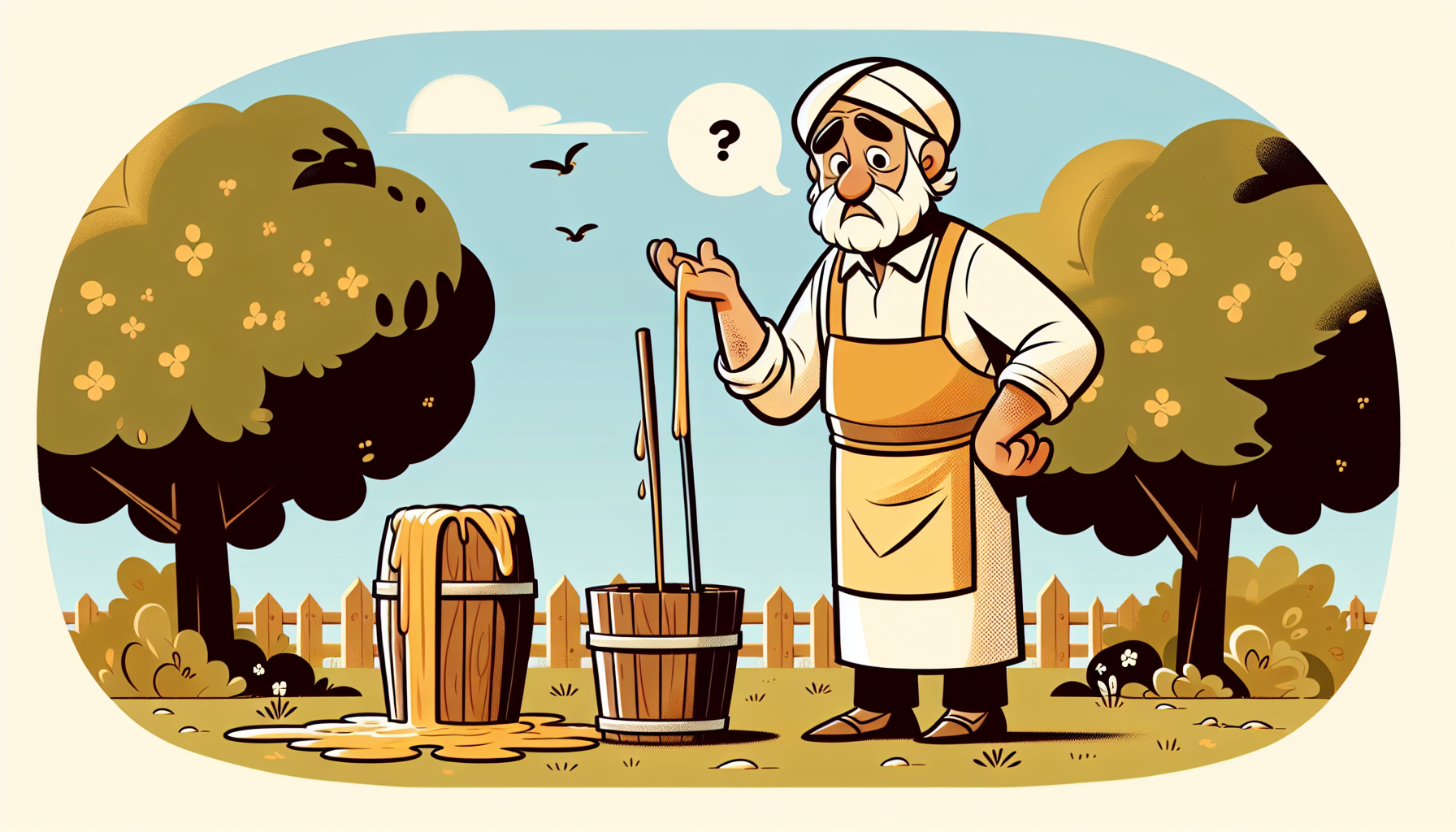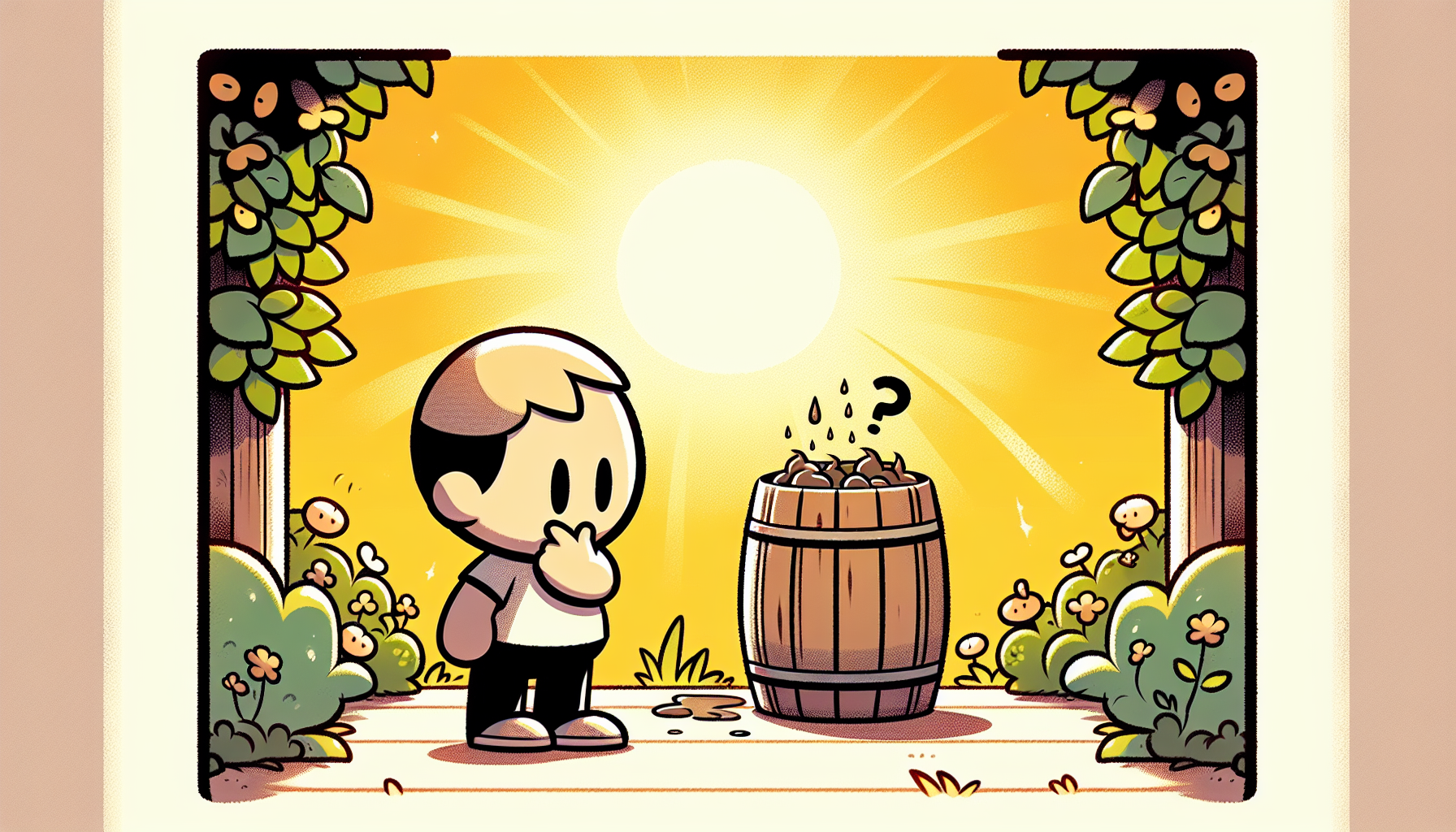
What to do with bird droppings in the rain barrel?
Bird droppings in rain barrels are a typical garden issue: open rain barrels and rainwater tanks attract birds as a perch, while residues washed in from gutters impair the water quality. In addition to visual and odor problems, hygiene, plant compatibility and the protection of children and pets in the garden are also an issue. This article shows in a practical way how bird droppings in rainwater barrels can be dealt with immediately, cleaned gently and prevented in the long term - with solutions that take nature and bird protection into account.

TL;DR - The most important facts in brief
- In the event of bird droppings in the rain barrel, first block water for sensitive applications (no use for children, pets, splash water on edible leaves).
- Immediate measures: Fish off coarse particles, cover barrel, secure inlet (gutter) with sieve/filter, offer separate bird bath.
- Gentle cleaning: Empty container, brush out, treat with warm water and vinegar (approx. 5-10%) or oxygen bleach (sodium percarbonate, approx. 3-5 g/L), rinse thoroughly.
- Prevention: Tight-fitting lid, rain barrel strainer, gutter leaf guard, distance from feeders, alternative sitting and drinking places for birds.
- Preferably apply rainwater close to the ground; take care with vegetable leaves and observe waiting times (guide value: approx. 7-14 days before harvest).
Understand the causes: Why does bird droppings get into the rainwater barrel?
Bird droppings in rainwater barrels occur in two ways: either birds sit directly on the edge of the barrel, lid or downpipe and leave traces, or material is washed in via gutters. Open barrels are an attractive resting place, especially when the ambient temperature is high or there is a lack of water. Leaves, moss and organic residues also collect on roofs, which enter the rainwater barrel together with precipitation and increase the bacterial load.
Nutrient inputs are also relevant here: Organic substances promote algae in the rain barrel and can encourage mosquito larvae. The design also plays a role: wide openings, a lack of rain barrel strainers and unprotected inlets make it easier for nutrients to enter. If you tackle the causes in a structured way, you reduce the cleaning effort and keep the rainwater usable for longer.
Immediate measures: What to do with bird droppings in the Rain barrel?
If bird droppings are found in the rainwater barrel, keep calm but, as a precaution, do not use the water for sensitive purposes (e.g. children's paddling pool, vegetable leaves, drinking bowls for pets). The aim is to stop entry immediately and remove the coarse impurities.
- 1 Secure the inlet: Temporarily close or divert gutter inflow; use a rain barrel strainer to prevent new particles from washing in.
- 2 Fish off coarse particles: Remove visible residue with a ladle or fine net; use gloves and a mask if necessary.
- 3 Cover the barrel: Temporarily prevent other birds from sitting on the edge with a tight-fitting lid, tarpaulin or net.
- 4 Provide alternative water points: A separate, regularly cleaned bird bath at a distance from the rain barrel diverts birds.
- 5 Adapt use: For the time being, only use rainwater close to the ground for ornamental plants; for vegetables, wait a few days before harvesting (approx. 7-14 days as a guide).
Thorough cleaning and disinfection - how can this be done gently?
Safety and hygiene tips
- Wear gloves, goggles and a mask if necessary; avoid splashes.
- Clean and dry cleaning tools (brushes, trowels, buckets) separately afterwards.
- Do not discharge waste water into open waters; it is better to allow it to seep into the sewer system or seep away if permitted locally.
Step-by-step procedure for bird droppings in rain barrels
Empty the barrel as completely as possible. Brush out the inside walls with a soft brush and warm water, then treat with a mild cleaning solution: Vinegar (approx. 5-10%) dissolves limescale and biofilms, while oxygen bleach based on sodium percarbonate (approx. 3-5 g/L) breaks down organic residues by oxidation. Harsh chemical disinfectants should be avoided as residues can damage plants. After the exposure time (approx. 15-30 minutes), rinse thoroughly with clean water.
Aftercare: restart the system
After rinsing, allow the rainwater barrel to dry completely before reconnecting it. A fine-mesh rain barrel strainer in the inlet reduces future entries. Optionally, an initial collection container (leaf or dirt collector) can be connected upstream. For the first fillings, a visual inspection for turbidity or odor is recommended to confirm the cleaning quality.
Prevention: How can bird droppings in rainwater barrels be avoided in the long term?
Lid, sieve, leaf guard - the basic equipment
- Cover the rain barrel: A tight-fitting lid or a tight, UV-stable net prevents water from sitting on the edge.
- Rain barrel strainers and gutter leaf guards reduce the entry of leaves, feathers and faeces at the source.
- Combine inlet with filter cartridges (sediment/fine filter); change filter regularly.
Optimize location and garden layout
Position the rain barrel as far away as possible from popular perching areas: not directly under branches, roof edges with free access or next to feeding areas. A visible cover and beveled or smooth edges prevent landing. In addition, a separate, clearly visible bird bath can be provided, which is cleaned regularly - this channels the birds' urge to sit and drink and minimizes bird droppings in the rain barrel.
Advantage: Combining lids, strainers and leaf guards significantly reduces entries and extends cleaning intervals. The maintenance effort is permanently reduced, while the water quality remains more stable.
Challenge: In gardens with a high bird population and on hot summer days, even a covered barrel can be contaminated with water from the gutter. In this case, upstream filters and a first "flushing rain" that is diverted past the barrel can help.
Health and use: What are the risks and how can rainwater be used safely?
Rainwater is not drinking water. Bird droppings in the rain barrel can contain germs such as salmonella or other bacteria. This is why the water is primarily suitable for ornamental plants and for watering close to the ground. Edible plants should not be watered directly via the leaves; the root zone is better. A waiting period is recommended before harvesting (approx. 7-14 days as a guide), especially for leafy vegetables.
- Children and pets should not come into contact with contaminated water.
- Regularly check the smell, turbidity and color; clean the barrel if there are any abnormalities.
- Combat mosquito larvae: cover, surface skimmer or fine net; avoid chemical insecticides.
Technical upgrades: Filter rainwater and stabilize quality
Filter chain at the inlet
A simple, low-maintenance filter chain is most effective: coarse leaf catcher on the downpipe, fine filter or rain barrel strainer on the barrel, optional sediment filter and activated carbon module between the downpipe and drum. This reduces particles and odorous substances. Filters must be cleaned or changed regularly depending on use and leaf fall (approximate value: every week to a few months).
Store in the dark, keep cool
Light promotes algae. Dark, light-proof containers or a light-inhibiting cover keep biological growth to a minimum. If the rain barrel is in the shade and is regularly "turned over" with fresh water, the risk of odor and cloudiness remains low.
Bird watching as a solution partner: understanding behavior, avoiding entries
Those who know the activity of garden birds better can manage perches and flight routes in a targeted manner. A bird feeder with camera from vogelhaus-mit-kamera.com - with AI bird recognition via app - shows at which times and by which species the garden is most frequented. Feeders can then be positioned so that they are not directly above the rainwater barrel or inlet, which significantly reduces the amount of bird droppings in the rainwater barrel.
A bird nesting box with a camera from the same supplier also helps to know breeding times and nest proximity. With this information, the location of the rain barrel, drinking trough and perches can be adjusted so that birds have attractive alternatives without contaminating the rain barrel. Monitoring replaces disruptive deterrence measures and combines bird protection with garden hygiene.
Practical examples: Which measures work in typical gardens?
Small city garden

A compact rain barrel with a tight lid and integrated drainage at the side prevents perimeter seating. A rain barrel strainer at the inlet and a leaf guard in the gutter reduce entries; a small bird bath is placed 3-5 m away. Result: Less bird droppings in the rainwater barrel, less cleaning required.
Family garden with vegetable patch
Covering, filter chain and a rinsing mode during the first few minutes of heavy rain prove their worth. Water close to the ground; for salads and herbs, wait until harvesting. The children do not play near the barrel; the separate drinking trough is cleaned daily so that the birds' perching needs do not affect the barrel.
Large natural garden
In addition to lids and filters, structuring elements are used here: perches away from the barrel location, hedges and dead wood as attractive observation and resting zones. Thanks to observation via smart camera, hotspots identified and the rain barrel specifically removed from the flight lines.
Avoid mistakes: What makes bird droppings in the rain barrel unnecessarily worse?
- Open barrel without a sieve: invites birds to sit and flush everything in unhindered.
- Feeding point directly above the inlet: massively increases entries - food residues and droppings end up in the barrel together.
- Aggressive chemicals: residues can damage plants and are unnecessary if mechanical cleaning and mild agents are sufficient.
- Stagnant water: long standing times promote algae and odor; regular water circulation prevents this.
Tip: A small drain tap on the barrel makes partial emptying easier if the first, more heavily polluted filling is drained after heavy rain and only then collected.
Conclusion: What to do about bird droppings in the rain barrel - the practical combination
The most effective strategy against bird droppings in rainwater barrels consists of three components: immediate intervention in the event of ingress (blocking, fishing, covering), gentle, thorough cleaning (mechanical plus mild agents) and proactive prevention (lid, rain barrel strainer, gutter leaf guard, choice of location and alternative water points). In combination with smart bird watching, perching and feeding areas can be planned in such a way that birds remain welcome - but the rain barrel remains clean. This keeps rainwater usable for the garden, maintenance predictable and the natural garden healthy.
FAQ about bird droppings in the rain barrel
Is rainwater with bird droppings still suitable for watering? ▼
Howoften should a rain barrel be cleaned if there are often birds in the garden? ▼
Which cleaners are plant-compatible and yet effective against organic residues? ▼
Does a lid really help against bird droppings in the rain barrel or does it just cause odors to build up? ▼
Are UV lamps or chemical additives recommended in the rain barrel? ▼
How to prevent mosquito larvae if the barrel is permanently covered? ▼
Can rainwater with bird droppings be used for the pool or paddling pool? ▼
How useful is a first "rinsing rain" that is not directed into the garbage can? ▼
How far should a feeding point be from the rain barrel to minimize entries? ▼
What to do if bird droppings are regularly washed in via the gutter despite the lid? ▼
Note on ongoing operation: A quick monthly check (lid in place, screens clear, odor neutral) keeps the system stable. In the event of increased bird pressure, it helps to make alternative seating and drinking areas particularly attractive and to divert the first few minutes of heavy rainfall past the barrel. This keeps the rainwater reliably usable - and bird droppings in the rain barrel become a rare exception.
